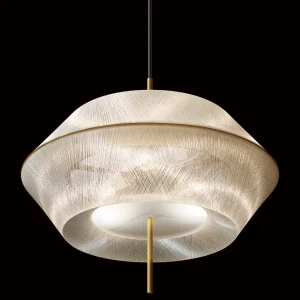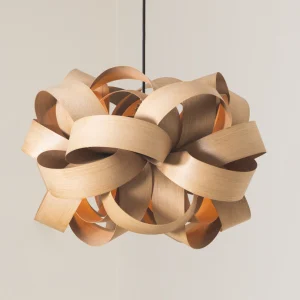Words By Pamela Buxton
1 I absolutely love designing hospitality spaces – everything from an independent cafe to a hotel
Loving the industry you’re working in is vital. Hospitality is fun – we’re creating spaces that people can enjoy and have a great time in – and it’s the area of design I’ve always been drawn too. What could be more rewarding than creating a positive outcome for the guest or user? And, the projects end up being completely different every time. We’ve just finished creating a new brand and interior for Roast in Borough Market, and it’s so satisfying to see the difference it’s made for the client and their guests.
 3Stories MD Ben Webb. Image Credit: Gareth Gardner
3Stories MD Ben Webb. Image Credit: Gareth Gardner
After studying at Kingston I started out at Blacksheep, where I was thrown into the deep end to work on restaurants, bars and hotels at a time when there were a lot of chains, and casual dining was dominating the market. I left to pursue my passion as a photographer for a while, but missed the design so much I found my way back, working with architect Andy Martin to launch his commercial design arm, Superfutures, before forming 3Stories.
2 Setting up 3Stories was the life-changer
I’d met Jordan [Littler, co-founder] some years earlier when we were both working together. We decided to put our skill sets together and see if we could do something for ourselves. We reasoned that if it all failed, we could always go and work for someone else. That was six and a half years ago, and there are now 12 of us.
We called the company 3Stories because we wanted to create a memorable brand rather than make the business about us as individuals. 3Stories is the mantra of our process – think, make and create.
 Le Petit BeefBar Edinburgh, within The George hotel, was conceived as part of the hotel’s overall refurbishment. Image Credit: Gareth Gardner
Le Petit BeefBar Edinburgh, within The George hotel, was conceived as part of the hotel’s overall refurbishment. Image Credit: Gareth Gardner
3 Combining branding and interior design creates a stronger narrative
We’re branding designers as well as interior designers – we need to be both to ensure we stay relevant in such a competitive industry. We think of ourselves as a creative agency with a mixed skill set – as well as interior designers, we have brand strategists, copywriters and art workers.
Our clients are generally looking for both interiors and brand design, and if they aren’t, we sometimes have to help them identify the need to define the brand strategy before embarking on the design.
On average, we’re working on five to eight projects at any one time, and there’s always a crossover from brands to interiors. For Pullman, traditionally seen as a business hotel with 150 locations around the world, we’re transforming both the brand and interiors to cater for a new type of guest. This involves defining the new target market, and creating the right type of environment to make those guests comfortable so that they want to continue to use the hotel. The concept will be very much focused around the food and beverage programming, which becomes an integral part of the success of the operation rather than just an afterthought.
 The Mövenpick bedroom enhances the guest experience while prioritising comfort. Image Credit: Gareth Gardner
The Mövenpick bedroom enhances the guest experience while prioritising comfort. Image Credit: Gareth Gardner
4 Prioritise the strategy Every job starts with a lot of brand strategy
work to create the brand narrative. The more projects we’ve done, the more we’ve realised the value of the strategic part of the process, and the importance of getting this right at the very beginning. Once the narrative is defined, the way forward on the interior design itself becomes clear very quickly.
5 You can’t design in a silo
You only get the best design, the best creativity, if you’re working together in the studio, bouncing ideas off each other and reviewing material samples – and that’s something you can’t get over Zoom. It’s collective thinking that makes design successful.
It’s very important that there’s a sense of togetherness in the studio culture. We’re all in the office from Tuesday to Thursday, and then on Fridays we take a few hours to share so that everyone can understand what each person, and the company as a whole, is doing. This works very well. We’ve tried to create a collective mindset that hopefully makes 3Stories unique.
 A bedroom at Hotel Indigo, Clerkenwell. Image Credit: Gareth Gardner
A bedroom at Hotel Indigo, Clerkenwell. Image Credit: Gareth Gardner
6 I love the buzz of starting a new project
Personally, the thing I get most excited about is when there’s a blank page with a completely open direction for the design. I find it exhilarating – the research, the factfinding – even though it’s quite scary to start with nothing and know you have to create something.
My time working as a photographer, when you start the day’s shoot with nothing, taught me how to handle this with confidence. Once you get beyond the anxiety and stress, you just have to let it happen and let it flow, and it’s similar with the creative process for design. You can’t beat yourself up about not getting the concept straight away. Instead, you have to have faith in the process, and know through experience that you’ll get there.
It’s important to make sure you have enough time at the beginning to have fun and explore. That’s when you get the best out of people.
 Situated above London’s iconic Borough Market, Roast has been a staple of the dining scene for over two decades. 3Stories’ role here was to redesign the brand and interior. Image Credit: Gareth Gardner
Situated above London’s iconic Borough Market, Roast has been a staple of the dining scene for over two decades. 3Stories’ role here was to redesign the brand and interior. Image Credit: Gareth Gardner
7 Making mistakes is part of the process
The more you learn from these, the better you become as a designer.
Junior team members can be scared of making mistakes, and can feel that they need to know everything and have the concept solved very quickly. But sometimes you have to work through the creative process in order to learn what does and doesn’t work. You can learn through this and begin to understand the client more. And the design outcome will turn out a lot stronger.
When you’re reviewing work and are in a safe space, it’s fine to do this.
Everyone makes mistakes, but I think it feels less acceptable to show imperfection nowadays, maybe because of things like Instagram, where the world is projected as polished and perfect.
8 You have to live the industry in order to be able to design for it
You can’t design a hospitality space without knowing what’s going on in the hospitality industry. We’re designing for the human experience, so we need to be able to understand why people want to go to these spaces in order to create an impact with our design.
Our studio culture is to go out to see concepts and formulate an opinion. We need to educate ourselves by going out to see why, for example, that hotel ten minutes down the road might be doing better than the one we’re working on. You’ll only find out by going and experiencing it.
Technology can make us a little bit lazy as designers, but by getting out there, we can build up a picture of the industry beyond the world of Pinterest and everything else online. Clients are employing us to create their space and they expect us to be on it, rather than doing something faddy that looks good on social media.
9 We have to adapt to changes
There’s been a massive shift in the hospitality industry since the pandemic, which has drastically affected how people work. For example, the way people travel to work in London on fewer days each week now puts extra pressure on certain key days at bars and restaurants when before there’d be a constant flow. Now, Wednesday and Thursday are the key weekdays.
This affects how we design these hospitality spaces. Venues are having to adapt to become more multi-use and flexible spatially. They’re looking for other ways of driving revenue at quieter times, such as hosting private hire, supper clubs or TED-talk style events.
This added pressure means that budgets and time frames have got tighter in the hospitality industry. We’re talking about money much more than we used to – the budget comes up almost from day one. And clients want to get the work done faster, as the longer they’re closed, the more they’re losing.
I think these changes are here to stay – flexible working won’t disappear. At the same time, there are also changes in the meetings and events world, as companies explore more engaging ways to entice the guest, that are tied in with new F&B [food and beverage] offers.
10 As designers, we have more power than we think in pushing sustainable agendas
I love what I do and I love the industry. But I hate the waste – it’s my bugbear. There’s the obvious waste of ripping out a whole restaurant that’s only three years old. But it’s not just the client’s responsibility to be sustainable. As designers, we’re controlling what things are put in front of the client in order to sell the concept. We’re the ones selecting a material, or designing something in a certain way, and that has an impact on what natural resources are used, and what these go through in the manufacturing process.
We have to be smart in how we tackle this. Rather than just wanting to please the client, we should be more conscious about what we’re using and specifying. If, for example, there are two tiles that might look similar but have very different environmental impacts, we should make sure that clients know that both options exist.
We need to really think and question everything, to up our game and be aware of how much say we really have. And hopefully this’ll lead to smarter and more meaningful outcomes rather than just nicelooking designs.





